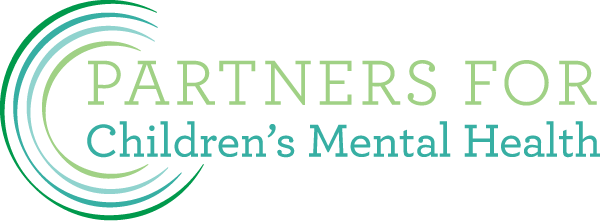The Challenge of Addressing the Mental Health Crisis
While living in Peru for two years, I first heard the Quechan fable called The Flight of the Hummingbird.1 The story begins when the Great Forest catches on fire, and all the forest animals, including the elephant, tiger, and bear, begin to flee. Except one. The tiny hummingbird named Dukdukdiya. Instead of abandoning the forest to its charred fate and seeking safety, she flies to the nearest stream, picks up a single drop of water, swiftly flies to the raging fire, and drops it. She returns to the stream and continues her solo effort against the roaring flames. The other animals, watching from safety, tell her she can do nothing in such a dire, dangerous, and hopeless situation. Nevertheless, she persists. Finally, the bear, one of the biggest and mightiest creatures in the forest, enquires from safety, “Little Dukdukdiya, what are you doing?” Without slowing down, Dukdukdiya responds to the animals, saying, “I am doing what I can.” This story and the takeaway message have stuck with me for nearly 20 years. We must ALL do what we can individually to make a difference in the face of overwhelming challenges.
The Fires Engulfing the Landscape of Mental Health
The state and context of public mental health is a raging fire.2,3 Youth and adolescents are experiencing pervasive mental health issues,4,5 with those from minoritized backgrounds receiving inequitable treatment.6 At the same time, healthcare systems are strained,7 online mental health is struggling to live up to its promises,8 the substance use epidemic continues,9 the perils of loneliness fester,10 the climate crisis is getting worse,11 historic redlining continues to contribute to health outcome disparities,12 interpersonal violence increases,13 and attacks on gender-affirming and LGBTQ healthcare ramp up.13 In the face of so many intertwined and complex problems, it comes as no surprise that many people, not just youth, are having trouble with their mental health and receiving treatment.
There are several barriers to mental health access, with the cost of treatment being the main barrier.4 Parents with household incomes under $40K express significant concern that self-harm, eating disorders, depression and anxiety, and substance use will affect their children’s lives. While these families are experiencing disproportionate concerns, they also report that they are not able to get the mental health services they need. These families are more than twice as likely than those with household incomes of over $90K to feel lonely, depressed, anxious, and experience greater difficulty accessing care. While nearly half of families with lower household income say they have been told they have a mental health condition, only one-fourth say they have received services, citing cost as the most significant barrier to treatment. Contributing to the cost-related issues, health insurance not covering mental health, stigma and shame, and lack of diverse mental health providers make mental health services access prohibitive.15
Integrated Behavioral Health in Primary Care.
A majority of the public says that family doctors and healthcare providers should play a significant role in addressing the current mental healthcare crisis. Many people with mental health concerns visit primary care settings. Primary care settings are vital to delivering high-quality care for all patients, including those with health, behavioral, and social needs.16-18 There is growing recognition of the potential of treating mental and behavioral health issues in primary care. Integrated behavioral health in primary care is a well-established healthcare model where behavioral health providers (psychologists, social workers, psychiatrists) address various health- and behavioral health-related concerns within primary care settings.19 Behavioral health providers deliver fewer and shorter treatment sessions, focusing on addressing patients’ issues with anxiety and depression, sleep difficulties, stress management, learning coping skills, and so much more. By working directly with medical providers, behavioral health providers help address access barriers and facilitate interdisciplinary care coordination, reducing healthcare costs and improving patient outcomes. Although the benefits of integrated behavioral health are well known, due to reimbursement policies, staffing issues, costs, and system redesign difficulties, most primary care settings have not adopted integrated behavioral health.20
Interrelated with the difficulties of adopting integrated behavioral health in primary care settings is the issue surrounding mental health screening. Although there are validated screening measures for identifying patients with mental health concerns and effective interventions for treating pediatric mental health concerns, they were not designed, developed, and tested with primary care settings in mind.21, 22
It is unclear what the best processes for screening are and what to do with a positive score. There are equity concerns regarding the scoring methods for screening measures. The current convention for scoring screening measures is to sum the items and use a cut-point score to inform clinical decisions. This approach to scoring is problematic for several reasons.23-24 The existing body of literature underscores that patients from different social and demographic backgrounds and their intersecting identities based on race, ethnicity, sex assigned at birth, gender, disability status, lived experience, sexual orientation, language, and nativity status influence the presentation of symptoms.25-33 Not accounting for patient differences in symptom presentation can lead to errors in diagnosis, clinical decision-making about who receives services, public policy, performance evaluation, and inferences regarding treatment effectiveness, all of which contribute to mental health inequities.
There has been a concentrated effort to improve the detection of mental health problems. Still, the challenge with this increased focus on screening is that more services are needed.34 Often, patients are left with a list of referrals to call, only to be met with long waitlists. There are many efforts to diversify35,40,41 and expand the behavioral workforce to address this gap in care. When patients finally meet with a behavioral health provider in primary care, they are unlikely to receive an entire course of treatment. Several interventions may be promising to improve pediatric mental health issues. Still, they have yet to be designed or evaluated in pediatric primary care settings, leaving providers to modify the intervention to be delivered in a shorter and briefer period, or patients drop out before they experience the whole treatment. Thus, determining which treatments are most acceptable, implementable, adaptable, effective, and sustainable for primary care settings is essential.
One of the toughest challenges to determining which interventions best suit primary care settings is the limited number of sessions. The average number of behavioral health visits for primary care patients is one.36 For this reason, developing effective and cost-friendly single-session interventions is crucial. This would require distilling any evidence-based intervention into its active ingredients and packaging it to be delivered in a single session. Adapting and designing treatments to be delivered in a single session in primary care may overcome challenges to mental healthcare access by rapidly scaling brief, focused, and effective interventions. Single-session interventions include the core elements of evidence-based interventions, but their brevity makes them easier to disseminate. Results from a meta-analysis of 50 randomized trials of a single-session youth mental health intervention found that they significantly affected symptoms in the short and longer term.37 Single-session interventions can bridge one of the gaps in mental healthcare. Given the promise of single-session interventions and the context of delivering interventions in primary care, developing single-session interventions may overcome challenges to mental healthcare access by rapidly scaling cost-friendly, brief, focused, and effective interventions to support youth mental health better.
Next Steps
As I have reflected on the state of youth and public mental health, it is easy to feel overwhelmed and skeptical about being able to stop the raging fire effectively. The rising awareness and acceptance of the importance of mental health and the destigmatization of seeking help for mental health concerns is hopeful and promising,38 which is also producing significant challenges to the way that young people understand and experience mental health.39 There is optimism about telemedicine and reduced stigma towards therapy, but there is still a lot of work to be done. The demand for mental health treatment has surged with long waitlists lasting up to 2 years. Due to decreased stigma towards therapy, more people of color are seeking support. Still, they are confronted with a lack of provider diversity,40,41 highlighting the importance of increasing a diverse and representative provider workforce. Grassroots and community efforts to address mental health concerns are growing in new settings 42—schools, ice cream shops, and barbershops—and in novel ways, from peer-to-peer support to youth-led initiatives.43 There has been a growing emphasis on leveraging technology and artificial intelligence to support those who need it most.44 Yet, a significant digital divide still needs to be bridged.45 Identifying novel ways to make mental healthcare more accessible and cost-friendly will be necessary to support those who need it most.
I was fortunate to grow up near a large extended family, so we often had large family meals every Sunday. Only now can I appreciate the immense work involved in feeding 20 or more people each week. There were usually three side dishes—buttered carrots, mashed potatoes, fresh rolls, and a salad—with a main entrée. The kitchen and the dinner table would be a beautiful mess. After each of these meals, knowing the sheer amount of work that clean up would take, my grandfather would announce, “If we all pitch in, we’ll be done in 5 minutes!” At once, everyone would scramble to clean up after our feast, some clearing the dinner table, others working on dishes, cousins putting leftovers away, an uncle vacuuming, a niece and nephew putting away the folding chairs, an aunt preparing dessert while grandma did the most critical work, resting! Although this took over five minutes to complete, it was quicker and more effective than a solo effort. To this day, I continue to marvel at what we could do as a team, cleaning up after dinner.
Despite the tremendous challenge at hand of improving the landscape of mental healthcare, I am hopeful that we can obtain a more equitable, just, safe, and sustainable future. Though there will never be a single magic cure to address the wicked problem of improving mental healthcare,46 I firmly believe that community-based participatory research,47 multilevel interventions ranging from developing single session interventions to be delivered within primary care settings to policies and bills focused on ways to diversify and support a behavioral workforce are part of a multiprong strategy to confront this raging fire, as we do all that we can to successfully address the mental health crisis and ensure equitable care by reaching people earlier and in places where they work, live, and play. As doubt creeps into my mind about our ability to obtain this future, I am reminded of my grandfather’s sage advice and the parable of Dukdukdiya that if we are all doing what we can together, we can make a difference.
James Kyle Haws, Ph.D.
_____
The overarching goal of Dr. Haws’s research is focused on figuring out ways to give mental health treatment away. He has a current study investigating the current practice and perceived needs regarding behavioral health in pediatric primary care. This study takes about 30 minutes to complete over Zoom, consisting of an interview and a few questionnaires, and you will receive a $50 gift card for participating. Anyone who has worked in primary care is eligible to participate. If you are interested, click here or email Dr. Haws.
- http://faculty.washington.edu/kbunn/Yahgulaanaas Hummingbird.pdf
- https://www.apa.org/monitor/2023/01/trends-improving-youth-mental-health
- https://www.apa.org/news/press/releases/2022/11/mental-health-care-strains
- https://www.kff.org/report-section/kff-cnn-mental-health-in-america-survey-findings/
- https://www.gse.harvard.edu/ideas/news/23/10/mental-health-challenges-young-adults-illuminated-new-report
- https://www.thelancet.com/journals/lanchi/article/PIIS2352-4642(23)00251-1/fulltext
- https://www.cdc.gov/respiratory-viruses/whats-new/track-hospital-capacity.html
- https://www.wsj.com/articles/the-failed-promise-of-online-mental-health-treatment-11671390353
- https://www.theatlantic.com/magazine/archive/2021/11/the-new-meth/620174/?utm_source=newsletter&utm_medium=email&utm_campaign=atlantic-daily-newsletter&utm_content=20230101&utm_term=The+Atlantic+Daily
- https://www.hhs.gov/about/news/2023/05/03/new-surgeon-general-advisory-raises-alarm-about-devastating-impact-epidemic-loneliness-isolation-united-states.html
- https://climate.nasa.gov
- https://link.springer.com/article/10.1007/s11524-022-00665-z
- https://news.harvard.edu/gazette/story/2022/06/shadow-pandemic-of-domestic-violence/#:~:text=The%20American%20Journal%20of%20Emergency%20Medicine%20said%20that%20domestic%20violence,of%20lockdown%20orders%20during%202020.
- https://link.springer.com/article/10.1007/s10508-023-02779-0
- https://pubmed.ncbi.nlm.nih.gov/28013081/
- https://pubmed.ncbi.nlm.nih.gov/22802297/
- https://pubmed.ncbi.nlm.nih.gov/26913774/
- https://pubmed.ncbi.nlm.nih.gov/18404649/
- https://integrationacademy.ahrq.gov/about/integrated-behavioral-health
- https://pubmed.ncbi.nlm.nih.gov/19148709/
- https://pubmed.ncbi.nlm.nih.gov/34626278/
- https://pubmed.ncbi.nlm.nih.gov/34982585/
- https://pubmed.ncbi.nlm.nih.gov/33132679/
- https://bmcmedicine.biomedcentral.com/articles/10.1186/s12916-015-0325-4
- https://pubmed.ncbi.nlm.nih.gov/15709831/
- https://pubmed.ncbi.nlm.nih.gov/20888647/
- https://pubmed.ncbi.nlm.nih.gov/16156835/
- https://pubmed.ncbi.nlm.nih.gov/17291596/
- https://ajp.psychiatryonline.org/doi/abs/10.1176/appi.ajp.162.2.250
- https://psycnet.apa.org/record/2018-36073-001
- https://ajp.psychiatryonline.org/doi/abs/10.1176/appi.ajp.2007.06091564
- https://psycnet.apa.org/record/1998-10730-002
- https://pubmed.ncbi.nlm.nih.gov/32515813/
- https://www.aamc.org/news/growing-psychiatrist-shortage-enormous-demand-mental-health-services
- https://www.apa.org/monitor/2022/11/inclusive-undergraduate-psychology?utm_source=twitter&utm_medium=social&utm_campaign=apa-monitor&utm_content=inclusive-undergraduate-psychology
- https://www.ncbi.nlm.nih.gov/pmc/articles/PMC8043914/
- https://lucyfoulkes3.medium.com/the-adolescent-mental-health-mess-c93f23f8ed56


